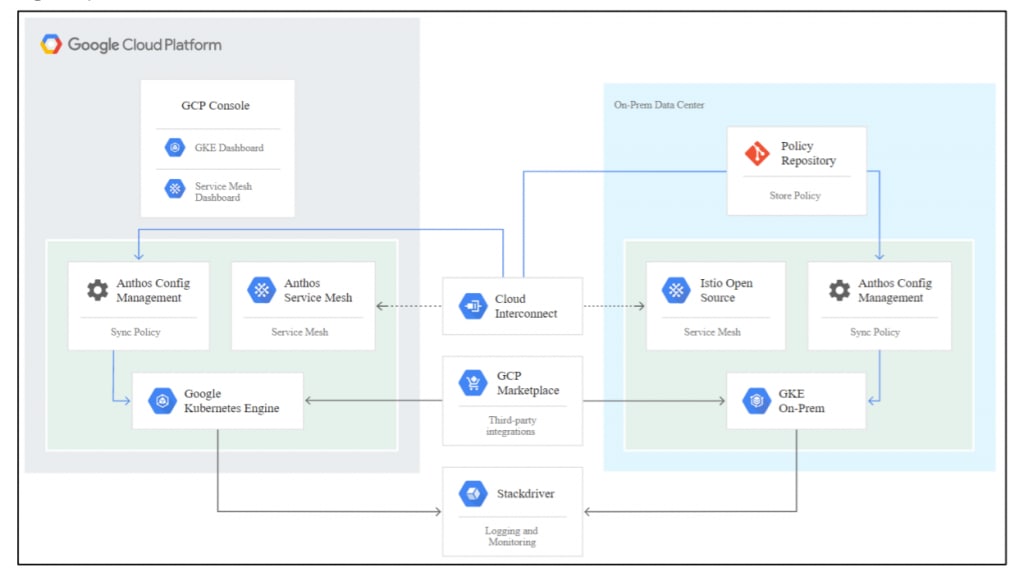London Calling & Anthos – A Punk Rock Ethos For Cloud Native and The Cloud…


Shaun Walsh

Every time I think about London, I remember a night in January of 1980 when I was asked by a school friend, “Are you doing anything tonight?” When I said no, he said, “Well you are now…” That is how I was introduced to The Clash, and it changed my life. The thing that struck me was the raw energy, the sense of anti-purpose in this case and a belief that they could change the world through their songs. It was also the year I got my first computer (a Zilog Z80 chassis, with an S-100 bus, running CP/M.) Obviously I am showing my age, but in this system I found my voice to change the world, and I will always hear London Calling each time I touch a keyboard.
And London is calling again…on November 20Th at Google Next London, we created a new voice for the developer community with the release of Anthos on NetApp HCI. Just as The Clash became a force of change for music and society, Kubernetes is becoming the voice of a new generation of developers and pioneers. If you are reading this blog, I don’t have to tell you what Kubernetes is or why it changes how we create change in IT and across our businesses. In this article from Forbes you can get a great run down of the features and strategy behind Google’s Cloud Anthos and Google Kubernetes Enterprise (GKE). For a new generation of developers, Kubernetes is the punk rock ethos and will change the world of applications and the cloud.
So, how are NetApp and Google working together?
GKE On-Premises is an extension of Google Kubernetes Engine that can be deployed in your private data center. This means an organization can deploy the same applications designed to run in containers in Google Cloud to Kubernetes clusters on premises – and we have validated this on NetApp HCI. GKE-On-Prem with NetApp HCI offers the following benefits:
- Cost Savings. End users can realize significant cost savings by utilizing their own physical resources for their application deployments instead of provisioning resources in their Google Cloud environment.
- Develop Then Publish. On-premises deployments can be leveraged while applications are in development, which allows for testing the applications within the privacy of a local data center, before being made publicly available in the cloud.
- Meet Security Requirements. Customers with increased security concerns or sensitive data sets that cannot be stored in the public cloud are able to run their applications from the security of their own data centers, thereby meeting organizational requirements.
At Google Next London, NetApp and Google expanded the strategic partnership to help customers unlock the power of Google’s Cloud Anthos and NetApp’s Data Fabric and HCI (Hyper Converged Infrastructure) private cloud services to connect their private clouds with Google’s Cloud Platform to have a new way to change their model of DevOps, modernizing applications and providing app/data mobility of new and legacy applications.
- NetApp Data Fabric – NetApp lets organizations deploy a single data fabric which creates the ability to mobilize data and applications across public and private cloud environments. Together, Google and NetApp help you access data and resources anywhere and everywhere to move fast and out-pace your competitors.
- Anthos on HCI - Anthos and NetApp HCI enable organizations to have "Write once, run anywhere" app flexibility with persistent data across hybrid cloud. Gain a cloud-native experience on-premises with a hybrid cloud platform that can scale capacity and compute independently.
- Private Cloud Services with HCI - NetApp’s HCI private cloud platform is fully tested and certified with Google Anthos. NetApp’s Element OS and automated deployment provides a true hybrid multicloud experience to ensure your IT team can deliver on-demand performance, scalability and simplicity using our QoS services and disaggregated architecture.
- NetApp Trident for Stateful Applications – One key element of enabling application mobility is the NetApp’s Trident. Trident is an open-source project that NetApp maintains for application container persistent storage, and has been implemented as an external provisioner controller that runs as a pod itself, monitoring volumes and completely automating the provisioning process.

The Anthos on-premises with NetApp HCI solutions provided by Google and NetApp enable IT teams to modernize and deploy existing workloads seamlessly across public and private cloud domains. The support for GKE on NetApp HCI will accelerate Cloud Native development and optimize deployment timelines for new apps and NetApp’s automated HCI services will provide QoS capabilities to deliver performance, automation, simplicity and scalability for your hybrid cloud environments.
Just as The Clash helped me find a new voice and embedded a punk rock ethos in my life and work, Google’s Cloud Anthos on HCI will help you and your teams transform how you run and think about DevOps to lead an application revolution.

Shaun Walsh
Shaun Walsh, AKA “The Data Buddah” leads the Hybrid Cloud Services product marketing team. He is a veteran of the tech space with tours of duty in cloud, storage, security, networking, AI/ML and HPC. Over his career he has held positions in engineering, sales, marketing, product management, channels. He is frequent contributor to media, podcasts and speaker at industry events on cloud, security, storage and data privacy issues. When he is not “NetApp-ing” he lifting heavy things for strong man competitions, rolling on the mat OSS!!!, waiting for Comicon and trying to make the perfect omelet.